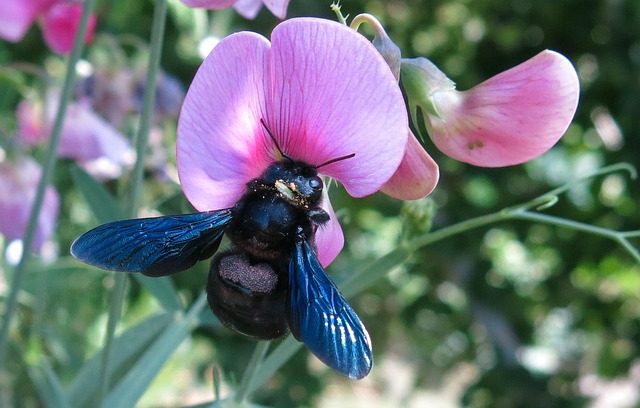In the quest to protect gardens and crops from relentless clover mites, understanding their behavior is key. This article provides a comprehensive guide to deterring these pests using barriers and traps, offering insights into both DIY methods and professional commercial extermination strategies. From identifying common entry points to exploring eco-friendly solutions, you’ll discover effective ways to safeguard your spaces from these pesky critters. Learn about safety measures and environmental considerations for a holistic approach to commercial clover mites extermination.
Understanding Clover Mites: Behavior and Habitat
Clover mites are tiny insects that, despite their diminutive size, can cause significant damage to lawns and gardens. Understanding their behavior and habitat is crucial when it comes to effective commercial clover mites extermination. These pests are most active during the warmer months, particularly in spring and summer, when they feed on a variety of plant materials, including grasses, flowers, and shrubs. They are highly mobile and can quickly infest large areas, making early detection and intervention vital for prevention.
Clover mites prefer cool, moist conditions and often seek shelter in cracks, crevices, and under debris during hotter parts of the day. They construct intricate webbing, which they use to trap their prey and protect themselves from predators. This behavior makes them particularly challenging to control, as traditional pest management methods may not penetrate these protective structures effectively. Therefore, when dealing with a clover mite infestation, it’s essential to consult professionals who can employ specialized techniques tailored for commercial extermination, ensuring long-term protection for your plants and lawn.
Common Barriers and Traps for Deterrence
In the realm of commercial clover mites extermination, several barriers and traps have proven effective in deterring these pesky critters. One common physical barrier is the use of fine mesh netting or screens, which can be installed around plants or gardens to prevent mites from accessing their targets. These nets act as a visible and tangible wall, effectively keeping mites at bay while allowing beneficial insects to pass through.
Chemical traps are another popular method. Sticky traps, for instance, lure mites with attractive colors and adhesives, ensnaring them once they land. This non-toxic approach is ideal for controlled environments like greenhouses or indoor gardens, as it minimizes the risk of chemical exposure. Additionally, certain natural repellents like neem oil or soap solutions can be applied to plant surfaces, creating an unpleasant experience for mites and effectively deterring their presence.
Implementing Effective Commercial Extermination Strategies
Implementing effective commercial clover mites extermination strategies is essential for maintaining a pest-free environment, especially in commercial spaces like offices, retail stores, and hotels. Professional exterminators employ a range of techniques to combat these persistent pests. One proven method involves the strategic placement of physical barriers and traps. These include specialized screens, nets, and adhesive traps that prevent clover mites from entering or trapping them once inside.
Commercial properties often benefit from tailored extermination plans. Exterminators conduct thorough inspections to identify mite entry points and active infestations. They then use this information to deploy targeted treatments, ensuring minimal impact on non-target organisms and the environment while effectively eradicating clover mites. Regular maintenance and monitoring are crucial for long-term success, as it allows for early detection of any recurring issues.
Safety Measures and Environmental Considerations
When implementing barriers and traps for clover mite control, it’s crucial to balance effectiveness with safety measures and environmental considerations. For areas where commercial clover mites extermination is necessary, using eco-friendly methods can help minimize potential risks to non-target species and the environment. Physical barriers like fine mesh nets or protective clothing can prevent mites from reaching host plants while allowing beneficial insects and natural air circulation.
Trapping systems should be designed with caution, employing non-toxic substances like sticky traps or pheromone lures. These methods attract and capture clover mites without harming other organisms. Regular monitoring and proper disposal of trapped mites are essential to maintain a safe and sustainable environment, ensuring the success of the control strategy in commercial settings.
In conclusion, understanding the behavior and habitat of clover mites is key to effective control. Utilizing barriers and traps, along with safe and environmentally-conscious strategies, can significantly deter these pests. For commercial establishments, a combination of these methods proves most effective in managing clover mite populations. Remember that, when it comes to commercial clover mites extermination, a proactive and integrated approach ensures a cleaner, more sustainable environment.
